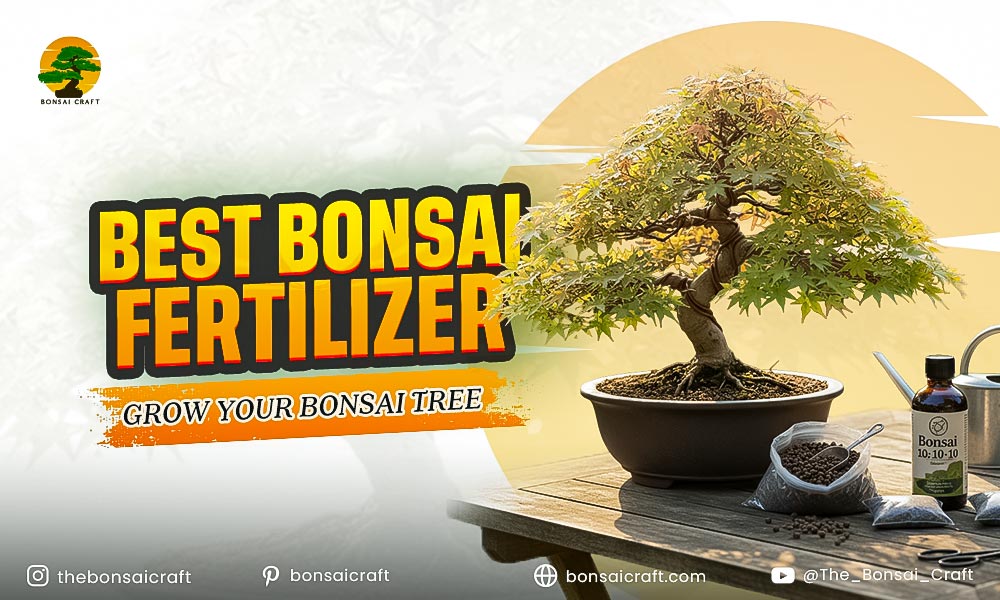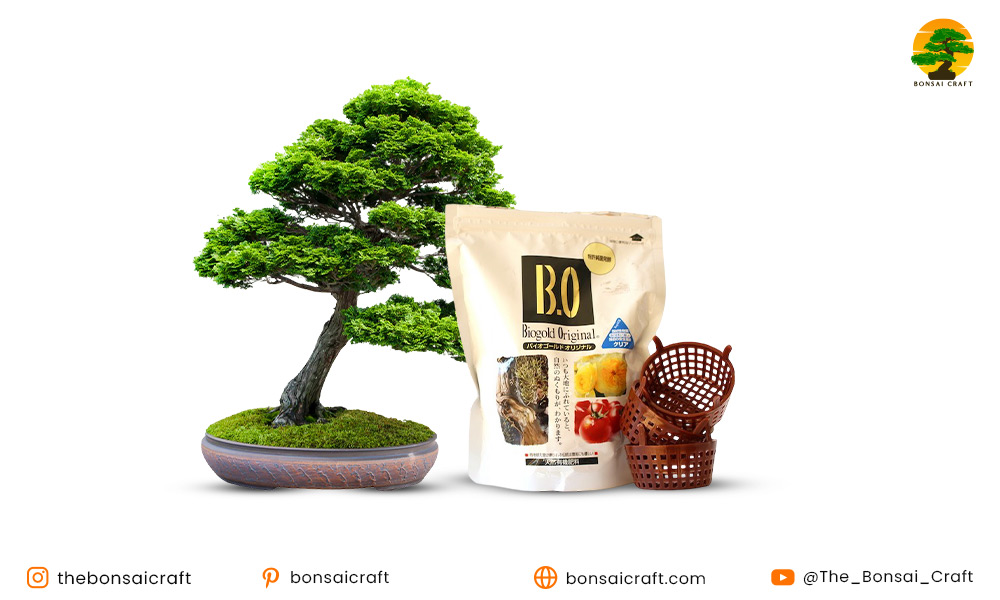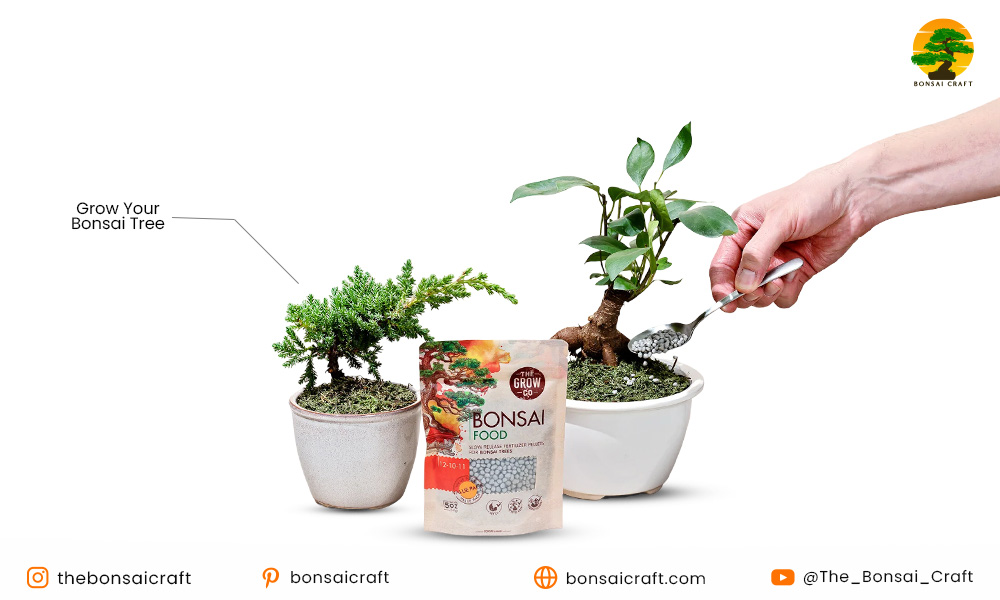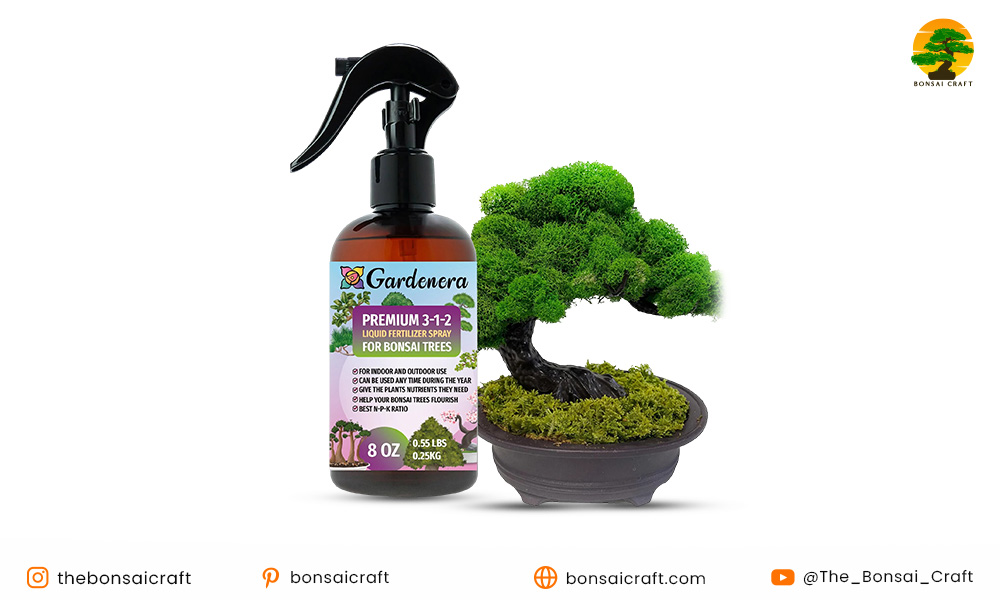
For every bonsai enthusiast, the key to a healthy, thriving tree is the right nutrition. Using the best bonsai fertilizer ensures lush foliage, strong roots, and long-lasting growth. Whether you are caring for a miniature bonsai tree or a mature specimen, knowing how to fertilize bonsai and what nutrients to provide is essential.
As a seasoned bonsai grower with years of hands-on experience, I’ll share proven strategies, expert tips, and practical guidance on selecting the best fertilizer for bonsai, homemade solutions, and optimal feeding schedules. By the end of this guide, you’ll know what to feed a bonsai tree to achieve robust health and aesthetic beauty.
Why Fertilizer Matters for Bonsai Trees
Unlike trees in the wild, bonsai are confined to small pots with limited soil. Nutrients deplete quickly, making bonsai fertilizer crucial for survival and growth. Without proper feeding:
- Leaves may yellow or weaken.
- Root development slows down.
- The tree becomes more vulnerable to pests and disease.
Using the best bonsai fertilizer mimics the natural replenishment trees receive in nature, ensuring longevity and vitality.

What is Bonsai Fertilizer?
Bonsai fertilizer is a nutrient blend designed to supply bonsai with essential elements:
- Nitrogen (N): Encourages leaf and stem growth.
- Phosphorus (P): Promotes root strength and flower/fruit development.
- Potassium (K): Enhances overall resilience, health, and disease resistance.
Most bonsai tree fertilizers come in organic or inorganic forms, including pellets, liquid, and slow-release cakes.
What is the Best Fertilizer for Bonsai Trees?
A bonsai fertilizer should provide balanced nutrients, including nitrogen (N), phosphorus (P), and potassium (K), along with trace elements like magnesium, calcium, and iron.
The best fertilizer for bonsai plants is one that balances NPK ratios according to the season—higher nitrogen in spring and summer for growth, lower nitrogen in autumn to prepare for dormancy. Organic or slow-release fertilizers are ideal for long-term health.
-
Organic bonsai fertilizer: Derived from natural sources like compost, fish emulsion, or seaweed extract. Safe for roots, promotes soil microbe activity, and reduces chemical build-up.
-
Liquid fertilizer for bonsai trees: Quick-acting, easily absorbed, ideal for foliar feeding or supplementing soil nutrients during growth spurts.
-
Slow-release pellets: Provide consistent nutrition over weeks. Recommended for trees in small pots to prevent nutrient depletion.
-
Choosing the right NPK ratio:
-
Spring and summer: 3:1:2 or similar for growth.
-
Autumn: 1:1:2 for maintenance and root health.
-
-
Species-specific needs: Conifers and junipers prefer lower nitrogen; flowering bonsai may need more phosphorus to support blooms.
👉 Expert tip: I recommend alternating between organic cakes (for steady feeding) and liquid fertilizer for bonsai trees (for quick nutrient boosts).
Types of Bonsai Fertilizer
1. Organic Bonsai Fertilizer
- Made from natural sources (fish meal, bone meal, seaweed).
- Provides slow, steady nutrient release.
- Enhances soil structure and microbial activity.
- Example: Biogold or homemade bonsai fertilizer.
2. Inorganic Fertilizer
- Synthetic blends with precise nutrient ratios.
- Quick absorption, giving faster results.
- There is a risk of overfertilizing if it is not applied carefully.
3. Liquid Fertilizer for Bonsai
- Diluted with water and applied weekly.
- Best for quick nutrient delivery.
- Ideal for indoor bonsai or trees showing deficiencies.
4. Slow-Release Fertilizer
- Granules or pellets that release nutrients over weeks.
- Convenient for busy bonsai owners.
- Works well when combined with occasional liquid feeding.

How to Fertilize a Bonsai Tree
To fertilize a bonsai tree, apply a balanced bonsai fertilizer during the growing season, typically every 2–4 weeks. Use organic cakes for slow release and supplement with liquid fertilizer for quick absorption. Always adjust strength and frequency to match the species, season, and health of your bonsai.
-
Identify the type of bonsai: Each species has unique nutritional requirements. For example, junipers and pines are low-nitrogen feeders, while tropical species need higher nitrogen.
-
Select fertilizer form:
-
Liquid fertilizer for bonsai trees: Dilute according to label instructions and apply every 2–4 weeks.
-
Slow-release fertilizer: Place pellets evenly across the soil surface; water after application.
-
-
Seasonal adjustment: Fertilize more frequently during active growth, less during dormancy.
-
Watering before fertilizing: Moist soil prevents root burn.
-
Fertilizing techniques:
-
Top-dressing: Spread slow-release pellets on the soil surface.
-
Soil drench: Pour diluted liquid fertilizer directly over the soil.
-
Foliar spray: For quick absorption through leaves (especially for micronutrients).
-
How Often to Fertilize Bonsai
Most bonsai need fertilizer every 2–4 weeks during the growing season (spring through autumn). Frequency depends on tree species, soil, and fertilizer type. Reduce fertilization in late autumn and stop during winter dormancy for temperate species.
Seasonal Feeding Schedule:
- Spring (growth phase): Weekly liquid feeding or biweekly pellets.
- Summer (active growth): Continue regular feeding; use balanced or high-nitrogen.
- Autumn (preparing dormancy): Switch to low-nitrogen fertilizer.
- Winter (dormant phase): Minimal or no fertilizer, except for tropical bonsai kept indoors.
What to Feed a Bonsai Tree
Feed a bonsai tree with a balanced fertilizer containing nitrogen, phosphorus, and potassium. Supplement with organic matter like fish emulsion, kelp extract, or compost tea for added micronutrients and soil health.
Examples of Bonsai-Friendly Nutrients:
- Nitrogen-rich feed: For leafy species like maples.
- Phosphorus boost: For flowering bonsai like azaleas.
- Potassium supplements: For conifers and pines.
Do Bonsai Need Fertilizer?
Yes, bonsai absolutely need fertilizer. Since they grow in limited soil, nutrients are quickly depleted. Regular feeding is essential to maintain strong roots, vibrant foliage, and long-term survival.
Explanation:
Yes, all bonsai trees require fertilizer for bonsai due to the limited soil in containers. Without supplementation, trees cannot access adequate nutrients to grow, survive pruning, or resist diseases. Fertilization is essential for both aesthetic and health purposes.
Homemade Bonsai Fertilizer
For those who prefer natural solutions, homemade bonsai fertilizer is an excellent option.
DIY Fertilizer Ideas:
- Compost Tea: Steep compost in water for a nutrient-rich liquid.
- Banana Peel Powder: Dried, ground banana peels add potassium.
- Coffee Grounds: Provides nitrogen (use sparingly).
- Fish Emulsion: Adds organic matter and micronutrients.
👉 Always apply homemade fertilizers carefully to avoid overfeeding.
Organic vs. Chemical Fertilizer for Bonsai
- Organic bonsai fertilizer improves soil health and promotes natural growth.
- Chemical fertilizers act faster but can cause salt buildup if overused.
- Best practice: Combine both—organic for long-term feeding, liquid chemical for targeted nutrition.

Liquid Fertilizer for Bonsai Trees
Liquid fertilizer for bonsai offers quick results, making it ideal for recovery after repotting, pruning, or stress.
- Application: Mix with water at half-strength, apply weekly.
- Best for: Indoor bonsai, tropical species, and trees showing nutrient deficiencies.
- Examples: Seaweed extract, fish emulsion, balanced liquid NPK blends.
Common Mistakes to Avoid
- Overfertilizing leads to burnt roots.
- Feeding during dormancy (except for tropical bonsai).
- Using full-strength chemical fertilizers.
- Ignoring species-specific needs.
Expert Tips for Fertilizing Bonsai
- Observe growth patterns before deciding on fertilizer strength.
- Alternate between organic and liquid feeds for best results.
- Flush soil occasionally with plain water to prevent salt buildup.
- Record feeding schedules for consistency.
Conclusion
Choosing the best fertilizer for bonsai and applying it correctly is vital for long-term health and beauty. From liquid fertilizer for bonsai trees to homemade bonsai fertilizer, there are multiple ways to provide balanced nutrition. By understanding species-specific needs, seasonal adjustments, and proper techniques for how to fertilize a bonsai tree, you can maintain a thriving miniature tree for decades.
As an expert bonsai grower, my personal tip is to combine organic and liquid fertilizers, monitor growth closely, and never overfeed. A well-fed bonsai is a healthy bonsai, and careful fertilization unlocks its full potential.
FAQs on Bonsai Fertilizer
How to fertilize a bonsai tree?
To fertilize a bonsai tree, apply a diluted liquid fertilizer weekly or use slow-release pellets every few weeks during the growing season. Always fertilize on moist soil to prevent root damage.
What is the best fertilizer for bonsai plants?
The best fertilizer for bonsai plants is a balanced blend (NPK 10:10:10 or 20:20:20). Use high-nitrogen fertilizers in spring, balanced mixes in summer, and low-nitrogen fertilizers in autumn for seasonal care.
How often should I feed my bonsai tree?
Feed your bonsai every 2–4 weeks during the active growing season. Tropical bonsai kept indoors may require year-round feeding, while temperate species need little to no fertilizer in winter.
Can I use homemade bonsai fertilizer?
Yes, homemade bonsai fertilizers like compost tea, banana peel powder, or fish emulsion can provide natural nutrients. However, consistency and moderation are key to preventing overfeeding.
Do indoor bonsai trees need fertilizer?
Yes, indoor bonsai trees need fertilizer regularly since potted soil lacks natural nutrient replenishment. Use liquid fertilizer for bonsai trees diluted to half strength every 2–3 weeks for best results.
